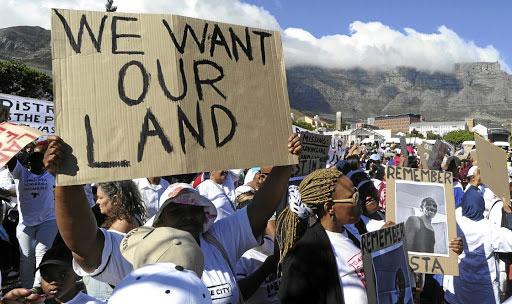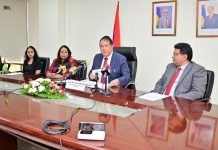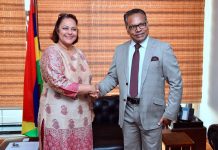Africa-Press – Mauritius. One of the consequences of the coronavirus pandemic is the breakdown of the value chains that underpin international trade. As a result, many countries dependent on external suppliers have had difficulties in sourcing consumer and producer goods.
This crisis provoked a new reflection on the neoliberal development model and on its capacity to absorb exogenous shocks. Should we reduce dependence on foreign markets in certain areas of strategic supply (food products and drugs)?
This is the question that challenges national officials, faced with the challenges posed by the interruption of supply chains, resulting in a shortage of items, long queues in front of supermarkets and the opportunistic commercialism of some traders.
that raise prices to mow vulnerable consumers. Outgoing economy Mauritius has an outgoing economy which is embedded in globalization based on the economic interdependence of nations.
The theory behind globalization is based on two principles: (a) countries specialize in producing products and services for which they have comparative advantages (Ricardo theory), and
(b) they adhere to rules that allow them to trade freely.
Mauritius has followed an export-led growth model in order to obtain the foreign exchange necessary to finance imports. This model is based on four poles:
(a) the export manufacturing industry,
(b) the export agricultural industry,
(c) tourism, and
(d) offshore financial services.
In recent decades, the country’s exports have followed a downward curve (Rs 82 billion in 2019 against Rs 97 billion in 2015) while imports have followed an upward curve (Rs 200 billion in 2019 against Rs 168 billion in 2015) , whipped up by overconsumption.
The ratio of net exports of products and services as a proportion of Gross Domestic Product reached a negative rate of 15% in 2019, according to the Bank of Mauritius report.
This has created a chronic trade deficit (Rs 124 billion in 2019), which is financed by the contribution of external capital, including foreign direct investment (FDI) in the real estate sector (luxury villas on the coast built for foreign residents ).
The country therefore finances its disproportionate lifestyle by selling off entire sections of the national territory. The export industry is faltering under the effect of the loss of competitiveness in the face of more efficient competitors and with the relocation of textile factories from Mauritius to countries with low production costs (Bangladesh, Madagascar).
A weakness of globalization is that the large countries, in times of crisis, withdraw into themselves in a sudden attack of protectionism, even if it means reducing their exports (India ceasing to export certain drugs, for example) and their products.
imports (the United States imposing tariffs on imports from China). The breakdown of international value chains exposed the great dependence of certain countries, including Mauritius, on foreign markets. Self-centered model
In the 1960s and 1970s, alternative development theorists advocated industrialization by import substitution (complementary to export-oriented industrialization) for poor countries in order to reduce their dependent position in the global economy as peripheral producers of raw materials for the rich countries in the center.
It was Samir Amin, an Egyptian economist, who developed the theory of dependency better by proposing self-reliance as much as possible for peripheral countries (“Le développement unequal”, 1976).
He postulates that self-centered development does not mean autarky but rather the delinking of a country from the global system as far as possible in order to better exploit its potential to meet local needs.
For his part, René Dumont, French agronomist, had already sounded the alarm (‘Black Africa is badly gone’, 1962) at the time of African decolonization to emphasize that the black continent was doing it wrong to ensure the food self-sufficiency.
Today, the work of these two thinkers has prophetic value and remains a benchmark in the analysis of development issues in the Third World. All research on alternative development can be summed up in the alternative conception of development proposed in 1975 by the Dag Hammarskjold Foundation (“What Now? Another Development”). This concept is:
(a) Needs-oriented (material and non-material),
(b) Endogenous (coming from within the company),
(c) Self-centered (in terms of human, natural and cultural resources),
(d) Ecologically sustainable, and
(e) Based on structural transformations (of the economy, of society, of the relationship between men and women and of power relationships).
Opportunity for reform Each crisis provides the opportunity to review the system in place to determine whether it is efficient and sustainable over the long term. A self-centered development model objectively has limits in a country devoid of natural resources.
However, we can no longer delay sustainable development if we want to ensure a sustainable level of food security and energy security in the country while reconciling development needs and the need to preserve natural ecosystems in the fight against climate change.
. To this end, industrialization by import substitution is a necessary step.
If 50 years after independence, the food self-sufficiency ratio is less than 30% in the country, it is a statement of failure of the entire production strategy. More than ever, land reform is needed to free up land for food production that would otherwise be used to develop settlements.
The agricultural sector has experienced a severe regression with the loss of guaranteed access to the European market for sugar, but it has potential which must be exploited.
The conversion of agricultural land into real estate parcels should be halted and the construction of luxury hotels and villas of the IRS / RES type, which deprive substantial areas of alternative farming, should be placed on a ceiling.
In the absence of export prospects, the sugar industry does not produce more than 320,000 tonnes of sugar per year and prefers to do real estate development which guarantees a better return on invested capital.
The capacity of the cane sector should be exploited or optimized in terms of electricity production from bagasse (both for energy security), ethanol as a supplement to gasoline (an ethanol / gasoline ratio of 10% / 90 % is feasible), various alcohols and special sugars.
Unusable land for cane, tea and fruit should be converted to food crops and pasture for livestock. If the state should requisition private land for food production, as Lalit proposes, let it do so in the best interests of the nation.
If the Government has been able to nationalize the holdings of the ex-BAI, there is no reason for it not to be able to engage the sugar establishments in a national food production effort.
The latter can either devote themselves to food crops or rent land inexpensively from planters and sharecroppers. Sustainable development would also aim to make greater use of alternative energy sources (solar and wind) and to finally start the blue economy with a fishing industry worthy of the name. For a million inhabitants, Mauritius has a vast territory – made up of islands and a marine area – which is underexploited.
For More News And Analysis About Mauritius Follow Africa-Press







